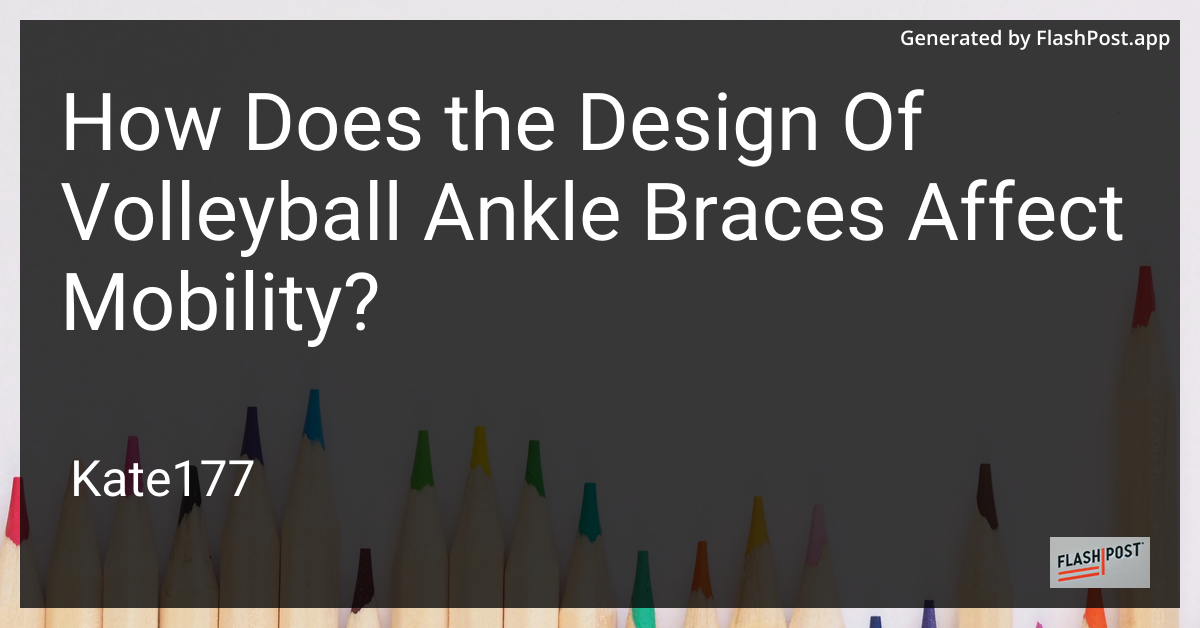
In the dynamic sport of volleyball, athletes are continuously seeking the perfect balance between performance and injury prevention. Ankle braces are a crucial gear piece, offering support and protection for athletes as they pivot, jump, and land. This article delves into how the design of volleyball ankle braces affects mobility, exploring factors that make them efficient and effective.
Understanding Ankle Brace Design
Ankle braces come in various designs, each with unique features tailored to support different levels of activity and injury prevention. Key elements in these designs include:
- Materials: Ankle braces generally use lightweight, breathable materials such as neoprene and nylon to keep the support flexible and comfortable.
- Straps and Closures: These components provide adjustable support, allowing for a snug and customizable fit.
- Profiles: Low-profile designs ensure the brace doesn’t interfere with footwear, maintaining agility and speed.
- Reinforcements: Rigid inserts or air cells can offer additional protection and stability to reduce the risk of sprains.
Design Features Affecting Mobility
Lightweight Materials
The selection of materials plays a significant role in preserving mobility. Lightweight materials like mesh or neoprene allow freedom of movement while maintaining support, ensuring that athletes can perform at their best without feeling restricted.
Adjustable Support
The presence of adjustable straps and closures is critical in this regard. It allows athletes to tailor the tightness and support based on their personal preference and the intensity of play. This customizable fit ensures that the brace supports the ankle without overly restricting its natural movements.
Rigid Support Elements
Incorporating rigid elements such as stays or panels within the design can enhance stability. While these elements provide additional security for injury-prone areas, they may slightly limit movement compared to less rigid designs. However, the added protection is often worth the trade-off, especially for players recovering from an ankle injury.
Profile and Fit
The perfect brace needs to provide ample support while maintaining a low profile to fit comfortably under volleyball shoes. A bulky brace can interfere with movement, while a too-thin design might not provide enough protection.
Balancing Protection and Mobility
Choosing the right ankle brace involves striking a balance between stability and mobility. Lightweight and flexible designs are ideal for players with no previous injuries who are looking for preventative support. Meanwhile, players recovering from injuries might favor designs with more rigid support to guard against re-injury.
Making the Right Choice
When selecting a brace, players should consider their personal play style, any previous injuries, and the level of support they require. It's crucial to consult with coaches and healthcare professionals to find a product that meets your specific needs without compromising performance.
For all volleyball enthusiasts, while ankle braces are vital for protection and play, don't forget the importance of quality equipment like durable outdoor volleyball nets that also enhance the gameplay experience.
Conclusion
The design of volleyball ankle braces is a finely tuned aspect of athletic equipment, affecting mobility significantly while aiming to reduce the risk of injury. The interplay between materials, fit, and support features determines the perfect balance, ensuring athletes maintain performance while staying safe on the court. When chosen correctly, ankle braces empower players to push limits without fear, giving them the agility and confidence to dominate the game.